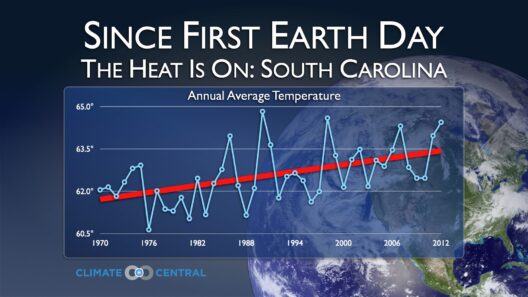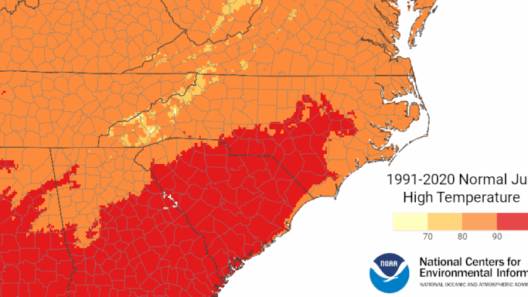China, a colossal enigma when it comes to climate dynamics, exhibits an extraordinary range of climates that span from the frigid north to the balmy south. The vast diversity in its climatological systems is not only a marvel of natural phenomena but also a harbinger of challenges and opportunities in the face of climate change. Understanding this spectrum can illuminate the intricate relationship between a nation’s geography and its ecological predicaments, especially as global warming precipitates unprecedented alterations in weather patterns.
The northern territories of China present a frigid tableau, characterized by vast expanses of tundra and permafrost. Here, cities like Harbin experience bone-chilling winters. The phenomenon of the frozen landscape influences various environmental aspects, such as the biosphere, hydrosphere, and human habitation. Its harsh winters and short growing seasons yield unique challenges for agriculture, necessitating innovative agricultural practices that leverage technology to maximize yield despite the climatic constraints.
The resilience of the ecosystem in this polar climate is notable. Permafrost, a layer of soil that remains frozen for two or more consecutive years, plays a pivotal role in the global carbon cycle. As the temperatures rise, however, these permafrosts begin to thaw, releasing significant quantities of methane—a potent greenhouse gas—into the atmosphere. The implications are dire, as this feedback loop exacerbates the very problem it largely contributed to, highlighting the delicate balance of nature’s systems.
Beyond the icy frontiers, the central and southern regions of China transition to subtropical climates, radiating warmth and moisture. Places such as Guangzhou and Hong Kong showcase lush biodiversity, teeming with flora and fauna that thrive in humid conditions. This area supports one of the world’s most vibrant ecosystems, but it is equally susceptible to the vagaries of climate change. Increasing temperatures, shifting rainfall patterns, and more intense tropical storms are some of the byproducts of global warming threatening these verdant landscapes.
In the southern provinces, agriculture flourishes, primarily owing to the advantageous climatic conditions that allow for multiple cropping seasons. Rice, a staple for billions worldwide, dominates this sector. However, rising sea levels pose a significant risk to these farmlands. Salinization of freshwater sources due to encroaching seawater can jeopardize food security and economic stability, necessitating strategic adaptations in crop management and water resource management.
The dichotomy between China’s north and south serves as a microcosm for the broader implications of climate change globally. It underscores a vital reality: no region is immune to climatic upheavals, and the ripple effects of environmental degradation know no borders. Urbanization exacerbates these challenges; as the population migrates towards coastal cities for economic opportunities, the pressure on natural resources escalates. Sustainability is no longer a buzzword; it is an urgent imperative for one of the world’s leading economies.
The Chinese government has recognized the pressing need for a multifaceted approach to combat these environmental issues. Policy initiatives aimed at reducing carbon emissions and investing in renewable energy sources are pivotal. Initiatives such as afforestation, the promotion of electric vehicles, and enhancements in energy efficiency signify monumental shifts toward sustainable practices. China’s commitment to carbon neutrality by 2060 reflects an ambitious agenda, but the efficacy of these measures remains contingent upon collective action from both policymakers and industries.
Moreover, the recent focus on enhancing biodiversity serves as a promising angle in China’s climate narrative. As ecosystems stabilize and rehabilitate, they often present potent solutions to combat climate change. The incorporation of Biodiversity-Climate Synergy strategies can not only bolster ecological resilience but also aid in carbon sequestration efforts, thereby mitigating the effects of climate change on both macro and micro levels.
Education and awareness play substantial roles in stimulating public engagement. By demystifying the complexities of climate science, citizens become more invested in sustainable practices. Empowering communities with knowledge can catalyze grassroots movements. Local initiatives aimed at both conservation and sustainable resource management have been increasingly successful, often driven by the very individuals who bear the brunt of environmental changes.
China’s climatic journey from the frozen north to the tropical south epitomizes the broader narrative of climate change—a reconciliation of historical practices with modern exigencies. The challenges are formidable, but they come with opportunities for innovation, resilience, and international collaboration. As global observers, the role of the international community becomes paramount in enhancing efforts to address climate change while acknowledging the unique contexts faced by individual nations.
In conclusion, the complexity of China’s climate dynamics offers a microcosm of broader global challenges we face today. The frozen expanse of the north and the verdant landscapes of the south together narrate a tale of diversity and activism against climate change—a narrative that invites curiosity and fosters an urgent call to action. Embracing this duality is critical as societies worldwide strive towards a sustainable future amidst the ever-increasing uncertainties of climate variability.







